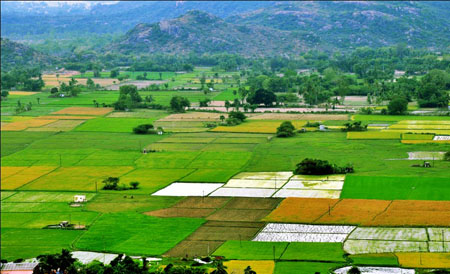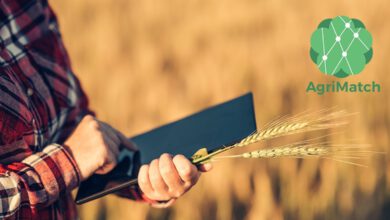Indian-Israeli Agricultural Collaboration
A lecture on alternative approaches to reduce losses due to decay
Prof. Samir Droby, Dept. Postharvest Science, ARO, The Volcani Center, Israel.

as the world population continues to exponentially increase and climate change begins to threaten world food production. increasingly, governments are focusing on food security and developing strategies to ensure a safe and reliable food supply. while increasing food production is and should be a main focus of ensuring sufficient supplies of food to feed a hungry world, it is doubtful that this in itself will be enough. limits to the potential of breeders to increase crop productivity, loss of arable land, increased temperatures, and water shortages, among several other factors all represent significant hurdles to our ability to solve the problem.
crop losses occurring between harvest and consumption are categorized as qualitative (i.e., a reduction in edibility, nutritional value, or consumer acceptance) or quantitative (i.e., reductions due to physiological and pathological disorders). losses experienced throughout the supply chain due to pathogen-induced diseases are a major component of food wastage. postharvest decay can be traced to infections that occur either during crop development (flowering to harvest maturity) or during harvesting and subsequent handling, storage, marketing, and post-consumer purchase. efforts have been made to minimize these losses through developing a better understanding of the biology and etiology of postharvest diseases as well as by developing adequate postharvest handling technologies and control strategies.
although, the use of synthetic chemical fungicides is still the predominant method of managing postharvest diseases, significant research has been focused on finding safe and effective alternatives. this is driven by problems associated with synthetic chemical fungicides, including 1) the development of fungicidal resistance, 2) consumer demand to reduce human and environmental exposure to chemicals, and 3) increased restrictions imposed by governmental regulatory agencies on specific agro-chemicals and/or their allowable residues, especially after harvest.
alternative approaches to reduce losses due to decay
biological control – in the past twenty-five years, significant research has been focused on the use of various, microbial antagonists (yeast and bacteria), that occur naturally on fruit surfaces, as antagonists that inhibit the ability of postharvest pathogens to establish infections in wounded fruit. the ability of a microbial antagonist to prevent postharvest diseases in harvested commodities relies on their ability to outcompete the pathogen for nutrients in the wound site and/or to form an impervious layer (biofilm) that physically prevents pathogen propagules (conidia) from receiving nutrients or other germination cues.
natural compounds – there is a rich and copious literature on the ability of various microbial and plant derived products to control various pathogens, postharvest or otherwise and the use of these compounds in conjunction with postharvest biocontrol agents has been very well documented. in addition to the use of a wide variety of essential oils, perhaps the greatest amount of research has been conducted on the use of chitosan (a natural antimicrobial product derived from shellfish.
physical treatments – regarding physical treatments, administered on packing lines, alone or in combination with biocontrol agents, heat (both wet and dry), and uv have shown the most promise. in both cases, these treatments have been shown to increase the efficacy of biocontrol agents by their direct ability to inhibit or kill pathogens or in some way stimulating host defense responses.
natural resistance – breeding for natural resistance has been of the most durable approaches to preventing plant diseases, however, it has not been extensively applied to postharvest diseases. this is because other fruit quality traits (color, flavor, taste, size, etc.) have been the main focus, and in the case of tree fruit crops, the time required for evaluating and selecting for a trait, such as postharvest disease resistance. recent research by the volcani center team along with usda team has identified apple germplasm with innate resistance to blue mold (penicillium expansum) in malus sieversii (a progenitor of the modern apple, malus x domestica) germplasm.
integrated approaches – alternative methods of postharvest disease control must perform effectively under commercial application and storage conditions, providing an acceptable and consistent level of control of target diseases. as a standalone treatment, however, many of the alternative control methods mentioned above are not fully capable of providing the level and consistency of control under the wide variety of environmental and packinghouse conditions that exist in the ‘real’ world. therefore, researchers have sought new ways of increasing the efficacy of alternative control methods by the use of different combinations of microbial biocontrol agents, natural antimicrobials, salts that alter the ph, and manipulation of the physical environment (e.g. heat treatment, uv, controlled or modified atmospheres) (droby et al., 2009). such approaches have shown great promise.
this lecture has been presented at the conference “postharvest and food security” held in hyderabad from 7-9 july, 2014.
the participants in the conference included scientists from different research institutions in hyderabad region, farmers, exporters and university students.




